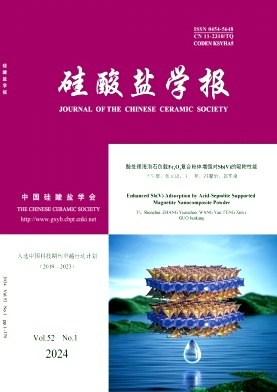Durability and service life prediction of reinforced concrete structures
Q4 Materials Science
Kuei Suan Jen Hsueh Pao/ Journal of the Chinese Ceramic Society
Pub Date : 2015-01-01
DOI:10.14062/J.ISSN.0454-5648.2015.10.11
引用次数: 18
Abstract
This paper presents some durability and service life models for reinforced concrete structures with regard to chloride ingress, carbonation and frost attack. In the past years a number of models for durability design of concrete structures have been suggested by relevant organisations or international committees. It is necessary to validate these models against long-term field data for their applicability with respect to exposure climate in order to satisfactorily use the models in the durability design and redesign of concrete structures. In this study, various potential models for concrete resistance to chloride ingress, carbonation and frost attack were briefly reviewed. Three models including the simple ERFC, the DuraCrete and the ClinConc, for prediction of chloride ingress were evaluated using the infield data collected from both the field exposure site after over 20 years exposure and the real road bridges of about 30 years old. A physicochemical model for prediction of carbonation depth was evaluated using the infield data collected from the field exposure site after 11 years exposure and the limited data from the real structures with the age of 7-13 years. For the modelling of frost attack, some problems in measurement of critical saturation degree and actual degree of saturation are discussed. According to the comparison results, the simple ERFC overestimates whilst the DuraCrete model underestimate the chloride ingress in most cases. The ClinConc model on the other hand gives reasonable good prediction for both the short-term (one year) and the long-term (21 years) exposure. The Papadakis model for carbonation also gives fairly good prediction of carbonation depth when compared with the Norwegian infield data classified as exposure class XC3, but underestimates the carbonation depths when compared with the infield data from Norwegian structures in exposure class XC4. For the frost attack, it is premature to apply the models to the service life prediction so far.钢筋混凝土结构耐久性与使用寿命预测
本文提出了钢筋混凝土结构在氯化物侵入、碳化和霜冻作用下的耐久性和使用寿命模型。在过去的几年中,有关组织或国际委员会提出了许多混凝土结构耐久性设计模型。为了在混凝土结构耐久性设计和再设计中令人满意地使用这些模型,有必要通过长期现场数据验证这些模型在暴露气候方面的适用性。本文简要介绍了混凝土抗氯离子侵入、抗碳化和抗霜冻的各种潜在模型。利用20年以上的现场暴露现场数据和30年左右的真实路桥数据,对简单ERFC、DuraCrete和ClinConc三种预测氯化物进入的模型进行了评价。利用野外暴露11年后收集的内野数据和7 ~ 13年真实构造的有限数据,对预测碳酸化深度的物理化学模型进行了评价。针对冻损模型,讨论了临界饱和度和实际饱和度测量中的一些问题。根据比较结果,在大多数情况下,简单ERFC模型高估了氯化物的进入量,而DuraCrete模型低估了氯化物的进入量。另一方面,ClinConc模型对短期(1年)和长期(21年)暴露都给出了合理的良好预测。与挪威XC3暴露等级的内野数据相比,Papadakis碳酸化模型也能很好地预测碳酸化深度,但与挪威XC4暴露等级的内野数据相比,该模型低估了碳酸化深度。对于冻损,目前将模型应用于使用寿命预测还为时过早。
本文章由计算机程序翻译,如有差异,请以英文原文为准。
求助全文
约1分钟内获得全文
求助全文
来源期刊

Kuei Suan Jen Hsueh Pao/ Journal of the Chinese Ceramic Society
Materials Science-Materials Chemistry
CiteScore
1.60
自引率
0.00%
发文量
9103
期刊介绍:
Journal of the Chinese Ceramic Society was founded in 1957 and published scientific research papers in Chinese or English for Chinese and English academic journals (16 journals). Journal of silicate is a core journal in Chinese, double-effect journal, Chinese excellent scientific journals, 100 outstanding Chinese academic journals, Chinese Association of Science and Technology excellent scientific journals (Category B).
 求助内容:
求助内容: 应助结果提醒方式:
应助结果提醒方式:


